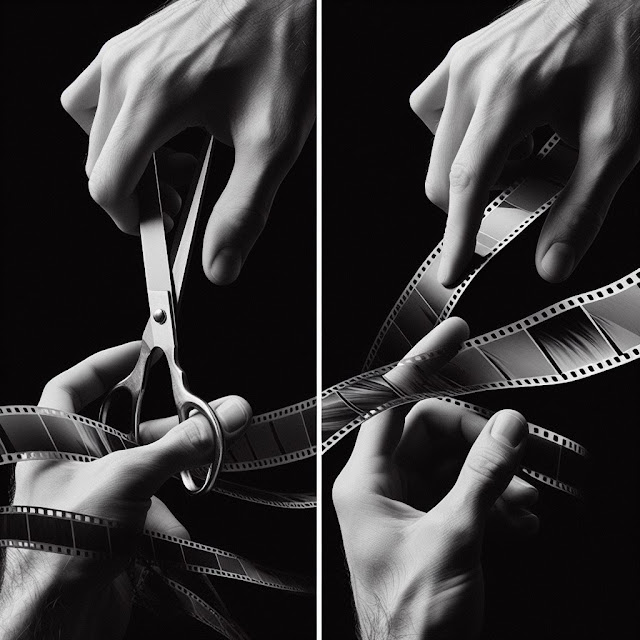
While
cutting on action is a valuable technique in film editing, there aren't strict
rules, per se, but rather guidelines and considerations that editors often
follow to make the edits seamless and effective. Here are some principles to
keep in mind when cutting on action:
1. Choose
a Clear Action to Cut On:
·
The action should be easily identifiable
and clearly visible to the audience. This could be a character's movement,
gesture, or any physical action within the frame.
2. Maintain
Continuity of Movement:
·
The action should flow smoothly between
the two shots, creating a sense of continuity. The movement in the first shot
should naturally lead into the action in the second shot.
3. Consider
Motion Direction:
·
Pay attention to the direction of the
action and movement. If a character is moving from left to right in one shot,
try to match that movement in the next shot to maintain spatial continuity.
4. Timing
and Rhythm:
·
Timing is crucial. The cut should occur
at a point where the action is visually appealing and where the audience's
attention is naturally drawn. Consider the rhythm of the overall scene and how
the cut contributes to the pacing.
5. Maintain
Screen Direction:
·
Be mindful of the 180-degree rule and
screen direction. Cutting on action should not violate these principles, as it
helps maintain the spatial relationships between characters and objects.
6. Use
Cutaway Shots if Needed:
·
Sometimes, cutting on action may require
inserting a brief cutaway shot to smooth the transition. This cutaway could be
a reaction shot, an object, or another element related to the action.
7. Consider
Emotional Impact:
·
Cutting on action can enhance the
emotional impact of a scene. The timing and choice of the action can influence
the audience's emotional response, so consider the mood and tone of the
narrative.
8. Vary
Shot Sizes:
·
Experiment with different shot sizes
(wide shots, medium shots, close-ups) to see how they impact the perception of
the action. Varying shot sizes can add visual interest and emphasize specific
details.
9. Maintain
Visual Cohesion:
·
Ensure that the visual elements in the
two shots match or complement each other, creating a cohesive and aesthetically
pleasing transition.
10.Practice
and Experiment:
·
Cutting on action requires practice and
experimentation. Try different approaches, and pay attention to how the timing
and rhythm affect the overall impact of the edit.



